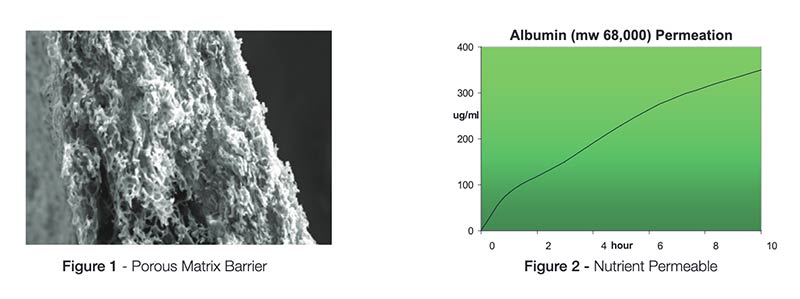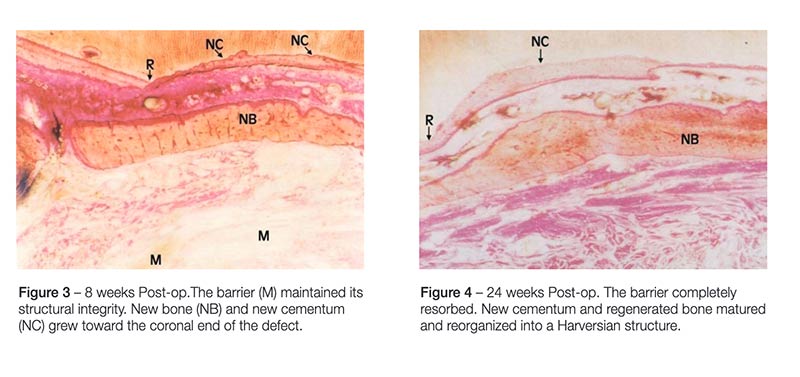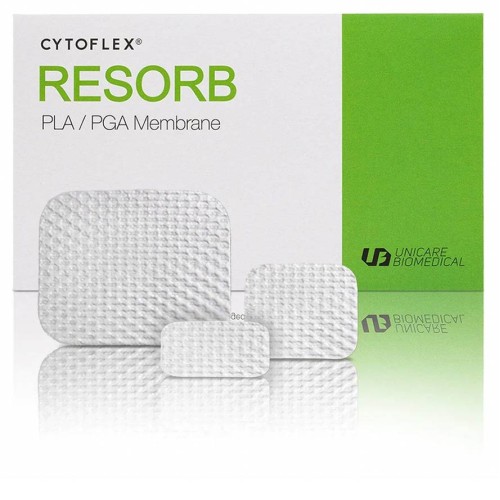Cytoflex Resorb PLA/PGA Membrane
- Product Code:
- Availability: In Stock
-
Prices change with available options
Composition
Cytoflex® Resorb® is a microporous membrane made of synthetic, bioresorbable polyglycolide (PGA), polylactide (PLA) and D, L-lactide /glycolide (PLGA) copolymers. PGA, PLA and
PLGA are all biocompatible; these materials have been well-documented and widely used in implantable devices for medical and dental applications.
Physical Properties
Cytoflex® Resorb® membranes have a thickness of 370um and pore size of 10-100um (Figure 1). These micropores allow for nutrient permeation across the membrane (Figure 2). The membrane has a mechanical flexibility comparable to that of uncoated, standard copy paper. The material retains most of its rigidity when wet and during early days of implantation. In general, rigid membranes (including crosslinked collagen and non-resorbable membranes) have a tendency to revert back to their original shape instead of adapting to the graft site. These properties must be considered during treatment planning to decrease the likelihood of wound dehiscence.

Resorption Duration
Cytoflex® Resorb® membranes have a long resorption duration. Preclinical beagle dog studies have demonstrated that the membrane maintains barrier function for about 8 weeks and resorbs within 6 months (see Figures 3 & 4 below). The materials degrade through hydrolysis and are metabolized to CO2 and H2 O by the Krebs cycle.

Preparation of Membrane for Insertion
The membrane should be handled using only powder-free gloves and/or with sterile atraumatic forceps. Hold the membrane gently and cut the membrane to the desired configuration with sharp scissors. After trimming, there should be no sharp corners or rough edges which may cause tissue irritation and/or protrusion. To enhance space-making capabilities, the membrane may be curved over the fingertip or a sterile instrument handle to create a dome shape. This curving action may be used to soften the membrane matrix if needed. The side with the distinct diamond pattern embossing (large grating) should face the gingival tissue. The smoother side should face the bony defect or bone graft site. Note: In the inner package, the layer facing the dentist should face the gingival tissue.
To enhance stability and provide adequate protection of the space over the bony defect, the membrane should be trimmed to extend 2-3mm beyond the defect margins and remain at least 1 mm from adjacent, uninvolved teeth; avoid using unnecessarily large membranes.The use of a non-resorbable monofilament suture is recommended. Loss of tensile strength during the initial 2-week healing period can lead to premature membrane exposure. If additional stability is desired, the membrane may be stabilized with sutures. The use of bone tacks or bone screws to stabilize resorbable membranes has not been studied and is not recommended by manufacturer.

